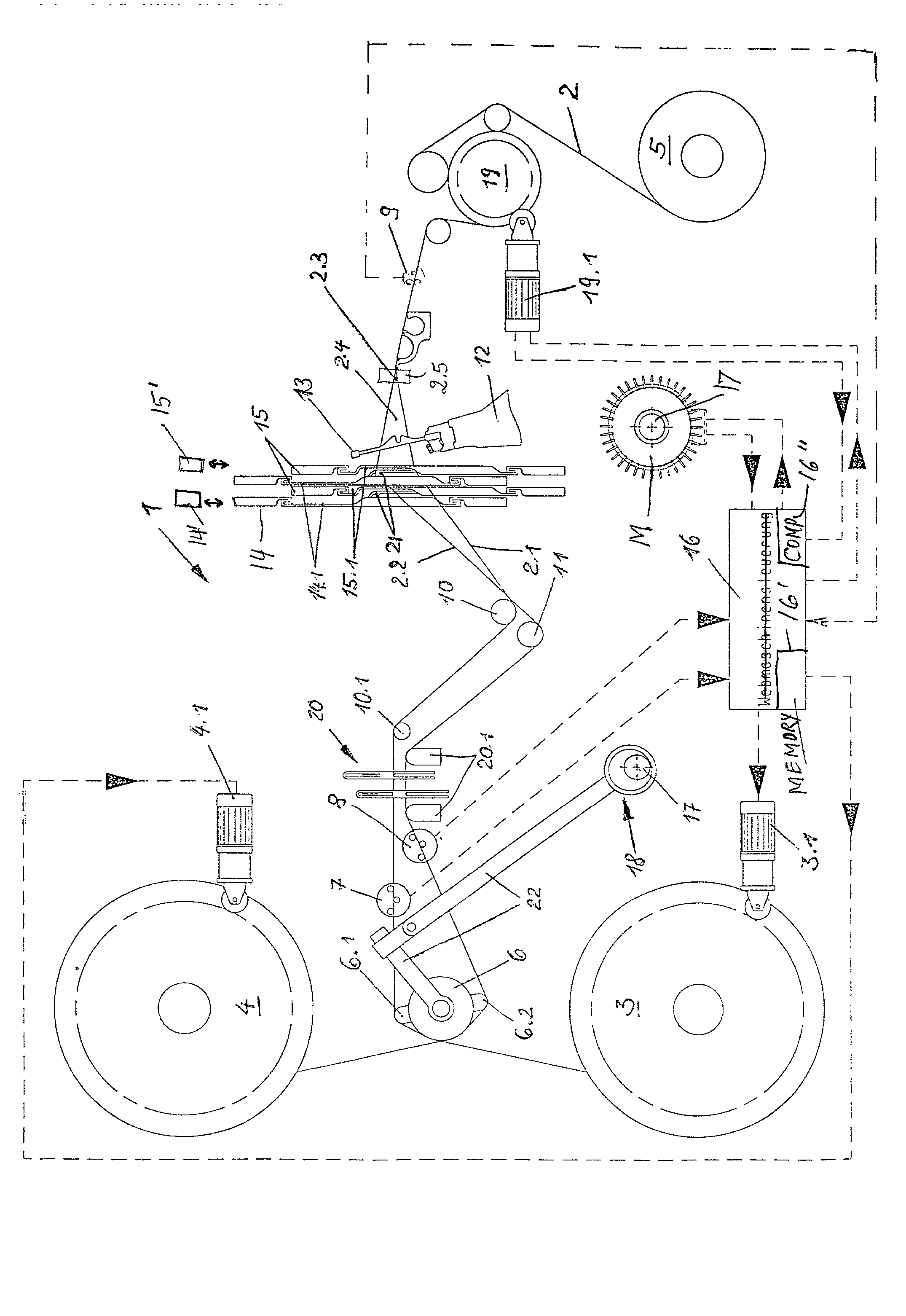Method and weaving loom for producing a leno ground fabric
a technology of ground fabric and loom, which is applied in the field of weaving loom, can solve the problems of requiring a substantial effort and expense for producing ground fabric, and the type of loom also requires a relatively high effort and expense for the construction and driving elements of the three heald frames
- Summary
- Abstract
- Description
- Claims
- Application Information
AI Technical Summary
Benefits of technology
Problems solved by technology
Method used
Image
Examples
Embodiment Construction
[0022] A loom 1 modified according to the invention comprises at least one first heald frame 14 and at least one second heald frame 15. Heald frame 14 is equipped with a multitude of lifting heddles 14.1 extending over the entire width or length in the weft insertion direction of the respective heald frame 14. Similarly, heald frame 15 is equipped with an equal multitude of lifting heddles 15.1 also distributed over the length of the heald frame 15 in the weft insertion direction. Conventional drives 14', 15' for moving the respective heald frames 14, 15 up and down are symbolically shown above the lifting heddles 14, 15.
[0023] Each of the first and second lifting heddles 14.1 and 15.1 cooperates alternately with a half heddle 21. Thus, the two lifting heddles 14.1, 15.1 in their cooperation with the respective half heddle 21 form in their distribution over the entire weaving width within the heald frames 14 and 15, the shed formation components for forming the loom shed 2.4 for the...
PUM
 Login to View More
Login to View More Abstract
Description
Claims
Application Information
 Login to View More
Login to View More - R&D
- Intellectual Property
- Life Sciences
- Materials
- Tech Scout
- Unparalleled Data Quality
- Higher Quality Content
- 60% Fewer Hallucinations
Browse by: Latest US Patents, China's latest patents, Technical Efficacy Thesaurus, Application Domain, Technology Topic, Popular Technical Reports.
© 2025 PatSnap. All rights reserved.Legal|Privacy policy|Modern Slavery Act Transparency Statement|Sitemap|About US| Contact US: help@patsnap.com

